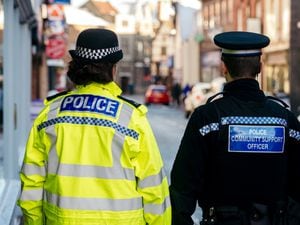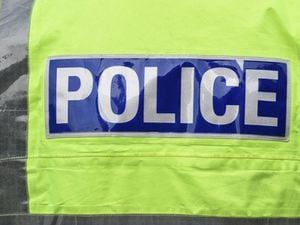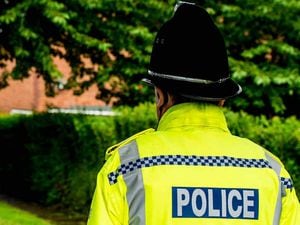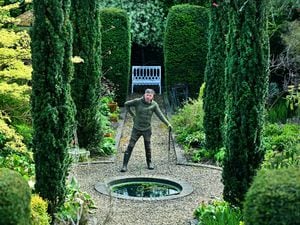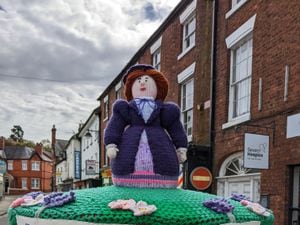Remembering those who made history
From the revered engineer and the leading war poet, to the first person to swim the English Channel, scores of Shropshire people have written their names in the history books and left their mark on the world.
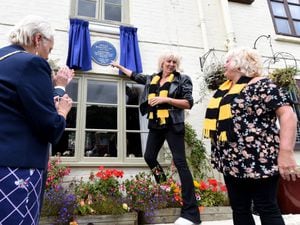
They are now commemorated with blue heritage plaques dotted across the county, a small but poignant marker of the work they did and the legacy they left behind.
Put up by town councils and civic societies, charities and other organisations, the iconic plaques celebrate some of Shropshire’s most famous sons and daughters, including stars of sport and the arts, pioneers in technology and religion – and the county’s best loved gardener.
Plaques have also been used to tell the stories of important buildings and sites of historic events, of which Shropshire’s rich and colourful past has no shortage.
Here are 10 of the people and places celebrated with blue plaques in Shropshire:
Wilfred Owen
One of the great poets of the First World War, Wilfred Owen was born at Plas Wilmot on the outskirts of Oswestry, later moving with his family to 69 Monkmoor Road in Shrewsbury.
Blue plaques on both homes mark his connection to the buildings.
Owen was killed aged 25 just days before the end of the conflict, on 4 November, 1918. News of his death reached his family on Armistice Day. His mother is said to have read the telegram as church bells rang out across Shrewsbury in celebration.
Some of Owen’s best known works include ‘Anthem for Doomed Youth’ and ‘Dulce Et Decorum Est’, though only five of his poems were published before his death.
Captain Matthew Webb
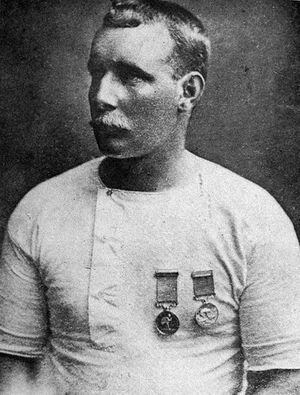
Born in Dawley in 1848, a young Matthew Webb learned to swim in the River Severn at Coalbrookdale. He went on to become the first person to swim the English Channel, on his second attempt in August 1875.
Aged 15 he had saved his 12-year-old brother from drowning, and was later hailed a hero after leaping into the Atlantic to try and rescue a man overboard during his time in the navy.
Webb died aged 35 during an attempt to swim through the Whirlpool Rapids below Niagara Falls.
He is commemorated by a blue plaque put up by Great Dawley Town Council bearing the words ‘Nothing Great is Easy’, while a monument to him also stands in the town centre.
Billy Wright CBE
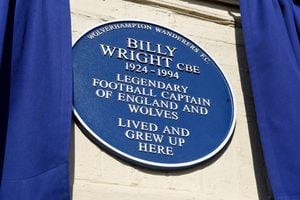
The first footballer in the world to get 100 international caps grew up in Ironbridge, where a blue plaque was unveiled at his childhood home in New Road last year.
It was the second plaque to be put up in the town honouring Wright, 20 years after the first was installed at 33 Belmont Road, where he was born.
Wright spent his entire career at Wolverhampton Wanderers between 1939 and 1959, and is also commemorated with a statue outside Molineux as well as having a stand named after him.
He made 105 appearances for England, including a record 90 as captain, and managed England’s youth team and later Arsenal after retiring from playing. He died in 1994 aged 70.
Mary Edwards
Mary Edwards was the first female ‘computer’ employed by the Board of Longitude to work on the British Nautical Almanac.
She worked from her home at 4 Brand Lane, Ludlow, where a Ludlow Civic Society blue plaque was installed in 2016.
Mrs Edwards’ husband John worked on the almanac from 1773 until his death in 1784, when it was revealed that she had in fact been doing most of the calculations.
She was employed to continue the work, calculating the position of the sun at different times of the day, and continued until her death in 1815 aged 65.
The minor planet 12627 Maryedwards was named in her honour.
Thomas Telford
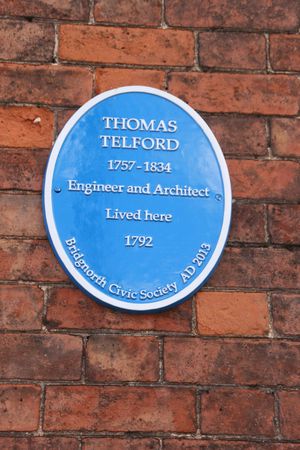
Scottish civil engineer and architect Thomas Telford became such a prominent figure in shaping the county that the new town of Telford was named after him.
Telford became Surveyor of Public Works in Shropshire in 1787, and oversaw the renovation of Shrewsbury Castle, the town’s prison, and several churches.
He designed around 40 bridges in the county, and in 1793 was appointed to oversee the construction of the Ellesmere Canal, including designing the Chirk and Pontcysyllte Aqueducts.
Telford died in 1834. A Bridgnorth Civic Society blue plaque was installed at his former home in East Castle Street, while a second plaque on the Corbet Arms in Market Drayton notes Telford’s time staying there in 1832.
St Michael’s Church
Another blue plaque bearing reference to Thomas Telford can be found at St Michael’s Church in Madeley, which he designed.
The plaque, installed by the town council as part of Madeley Town Trail, also pays tribute to Revd. John Fletcher, who is buried in the churchyard.
In the 18th century Fletcher became one of the leading figures of the Methodism movement as a contemporary of its founder, John Wesley.
Other notable graves in the churchyard include that of the ‘Nine Men of Madeley’, who were killed in a mining accident in 1864.
Percy Thrower MBE
Percy Thrower moved to Shrewsbury in 1946 to take up the job of Parks Superintendent for Shrewsbury Borough Council.
His passion for gardening led to a long and successful broadcasting career with the BBC and he became a household name, presenting Gardener’s World and appearing in over 100 episodes of Blue Peter.
He also opened his own garden centre, and wrote several books.
Mr Thrower stayed in his Parks Superintendent post, living at Quarry Lodge, until his retirement in 1974. He died in 1988.
A blue plaque was installed on Quarry Lodge in his honour by Shrewsbury Horticultural Society in 2013, to commemorate the 125th Shrewsbury Flower Show.
Dr William Penny Brookes
It’s hard to believe the modern Olympic Games were inspired by an annual sporting competition in Much Wenlock, organised by town GP Dr William Penny Brookes.
Born and raised at 4 Wilmore Street, a blue plaque honouring Dr Brookes was installed on the building by the Wenlock Olympian Society.
The annual games he started in Much Wenlock in 1850 are still held to this day. The 1890 event welcomed special guest Baron Pierre de Coubertin, who would go on to found the International Olympic Committee and organise the first modern Olympics in Athens in 1896.
But Dr Brookes never got to see the result of his efforts, dying just months before the Athens games aged 85.
Longmynd Hotel
The Longmynd Hotel was transformed in 1940 into the headquarters of charity St Dunstan’s – now Blind Veterans UK – which relocated from its base in Brighton during the Second World War and stayed until 1946.
Almost all British servicemen and women blinded in the conflict, around 700, spent time in Church Stretton, where they were trained in new manufacturing skills and learned to live without their sight.
The charity took over other buildings to turn into an eye hospital, accommodation and training workshops. Guiding wires were put down between the Longmynd Hotel and the town centre, so the veterans could find their way unaccompanied.
A blue plaque commemorating this time was installed at the hotel entrance in 2015 as part of the charity’s 100th anniversary celebrations.
It was unveiled by Joan Osborne, whose father was blinded in the First World War and moved the family to Church Stretton to teach Braille to the new arrivals. It was here that Joan met her late husband, blinded Second World War veteran Bob Osborne.
A wooden tablet was presented to the people of Church Stretton from the charity in 1987, and can be found in St Laurence’s Church.
Barbara Pym
Booker-nominated author Barbara Pym is commemorated with a blue plaque on the site of 72 Willow Street in Oswestry, where she was born in 1913. The house was demolished in the 1960s.
Pym penned novels including ‘Some Tame Gazelle’, ‘Excellent Women’ and ‘A Glass of Blessings’ in the 1950s and 60s, but her career was reignited in 1977 when she was twice nominated as the most underrated British writer of the century in the Times Literary Supplement.
A renewed interest in Pym’s work saw the publication of previously rejected novel Quartet in Autumn, which was shortlisted for the Booker Prize that year.
She died in 1980 aged 66. A second blue plaque can be found on Barn Cottage in Finstock, Oxfordshire, where Pym lived with her sister from 1972 until her death.
But what about…
Several other notable figures hailing from Shropshire are commemorated with blue plaques elsewhere in the country, though not in their home county.
Eglantyne Jebb, founder of charity Save the Children, was born in Ellesmere in 1876. A blue plaque on the former St Peter’s School in Marlborough marks her time teaching there. It was replaced last year after mistakenly commemorating ‘Eglantyne Mary Jebb’, a younger relative, for 23 years.
Mary Webb was born and raised in the village of Leighton, and rose to prominence as a romantic novelist and poet after her death in 1927. Most of her works are set in south Shropshire. A blue plaque can be seen at her former home in Weston-super-Mare.
Len Murray, Baron Murray of Epping Forest, was a Labour politician and trade union leader, born in Hadley in 1922. He led the TUC through the Winter of Discontent and clashes with the Thatcher government. He was created a life peer in 1985 and died in 2004. A blue plaque was unveiled at his former home in Loughton, Essex, last year.

